The Rijksmuseum in Amsterdam is a huge world-famous collection presented in 80 galleries, exhibiting 8000 objects that tell the story of 800 years of Dutch art and history. Come along on a journey from the Middle Ages up through the 21st century. Spread over four floors, told in chronological order. the collection focuses primarily on Dutch paintings of the 16th and 17th centuries.
For more information about Amsterdam, see the Official Tourist Information website.
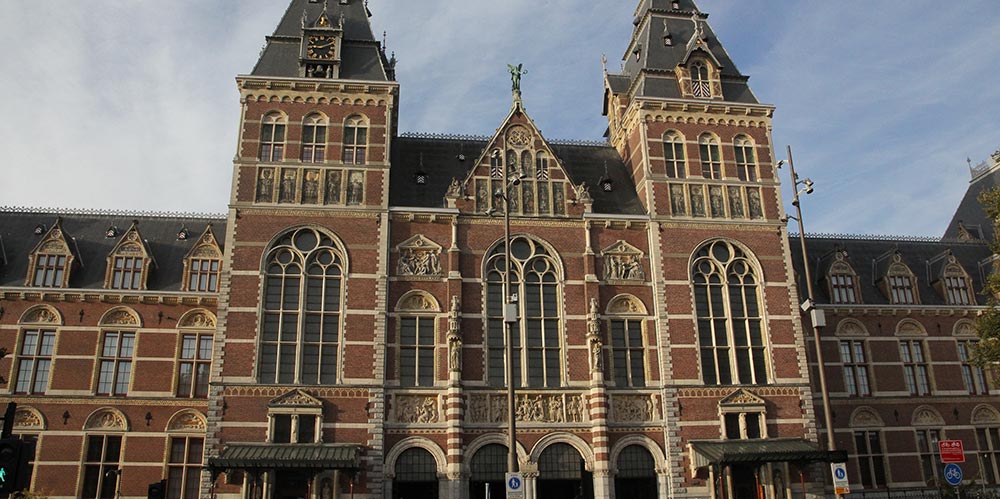
The museum does not try to present a complete sample of the entire world of art,but has a lot to show, thanks especially to the extreme genius of those great native painters: Franz Halls, van Ruisdael, Jan Steen with his merry family, singing and drinking, and most famously, Rembrandt. Don't miss out on the absolute highlights like Vermeer's Milkmaid, Van Gogh's self-portrait and a gorgeous collection of Delft blue pottery, ranging from tea sets to vases.
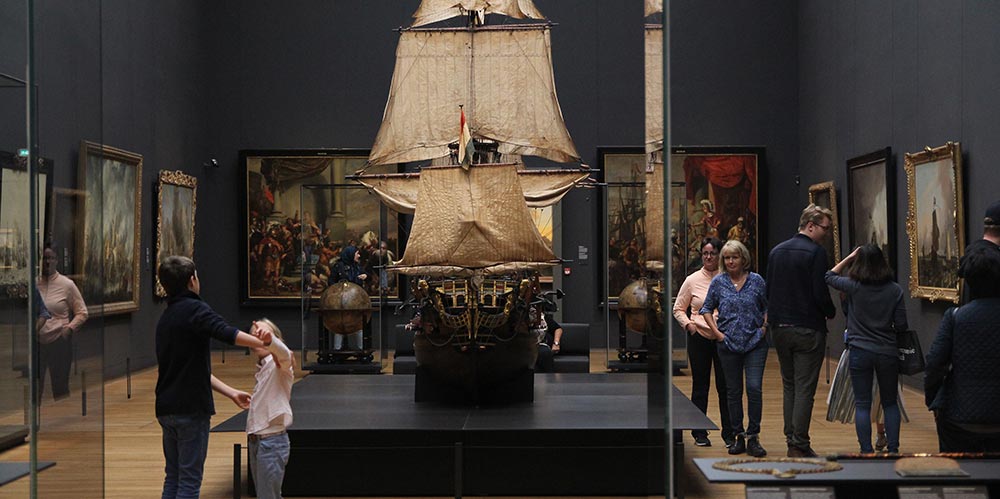
The total archive includes one million objects from the year 1200 up through today, with more than 2000 paintings from the Dutch Golden Age. Some 30 galleries are dedicated to the glory of the Golden Age, when the young mercantile Republic led the world in trade, science, shipping and the arts. Many objects from Dutch history tell that story with paintings, prints, drawings, photographs, silver, porcelain, delft, where furniture, jewelry, weapons, musical instruments, costumes and much more.

There are dozens of rooms with medieval arts, military weapons, later decorative pieces of the 19th century, some miniature house models, along with a sampling of minor Italian Renaissance paintings.
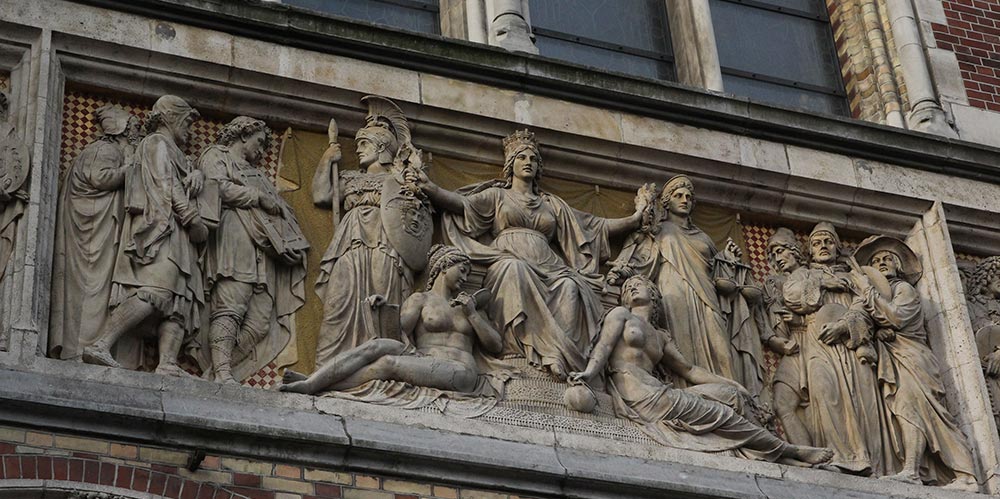
The building itself is a major work of art, designed in a neo-Gothic and Renaissance style by P. H. J. Cuypers, who also designed the similar looking central train station, both completed in the 1880s. The red terracotta facade is adorned with many statues, decorative stripes, reliefs and ceramic plaques depicting the arts, using a mix of medieval and 19th century styles. A busy road for bicycles and pedestrians runs right through the middle of the building, in a dramatic arched portal.
.jpg)
The museum gets very busy with two and a half million annual visitors. Here are a few tips for avoiding the crowd: come in the off-season when there are fewer visitors to Amsterdam, which has become one of Europe's most popular cities. Enter the museum when it opens at 9 a.m. to beat the rush, so you can get to the busiest sections first and enjoy the paintings in peace and quiet. When you enter, head straight to the top floor. This brings you into the Gallery of Honor, an extended corridor directed towards a clear focal point, the Night Watch Gallery. We will come back later for a closer look at this brilliant masterpiece.
.jpg)
By 9:30 in the morning this main gallery hall is still nearly empty, but within an hour it begins to fill up, especially in front of Rembrandt's The Night Watch, which is the most popular painting in the museum that everybody has to come see, kind of like the Mona Lisa in the Louvre -- more on that below.
.jpg)
The side alcoves along the Gallery of Honor contains some of the most popular paintings in the museum, ranging from the 17th century right up through Impressionism, in particular, the genius of Vermeer, including his world-famous Little Street, set in his hometown of Delft. These galleries also get quite busy, so get here in the morning right after enjoying the night watch.
While most visitors are drawn to the flashy colors, dramatic portraits and group ensembles, there is another world here hiding in plain sight, the still life. A simple collection of fruit in a bowl, flowers in a vase and remains of a big meal, can illustrate the entire history of trade in the Dutch Golden Age, if you know what you are seeing.

I urge you to look at this illustrated story from the New York Times, that reveals many layers of hidden meaning in one painting in this central grand gallery. You will be delighted how the story makes numerous allusions to other works of art. Of course, there is nothing like being at the museum in person, but this article comes close, with the added benefits of deep explanation and magnified details.
The museum is so large that most of the other galleries are very comfortable to walk through. Depending on the season, of course, but if you're here in the summer, it's going to be busier no matter where you are in the museum. In the off season or shoulder season you can enjoy a tranquil experience throughout most of the building.
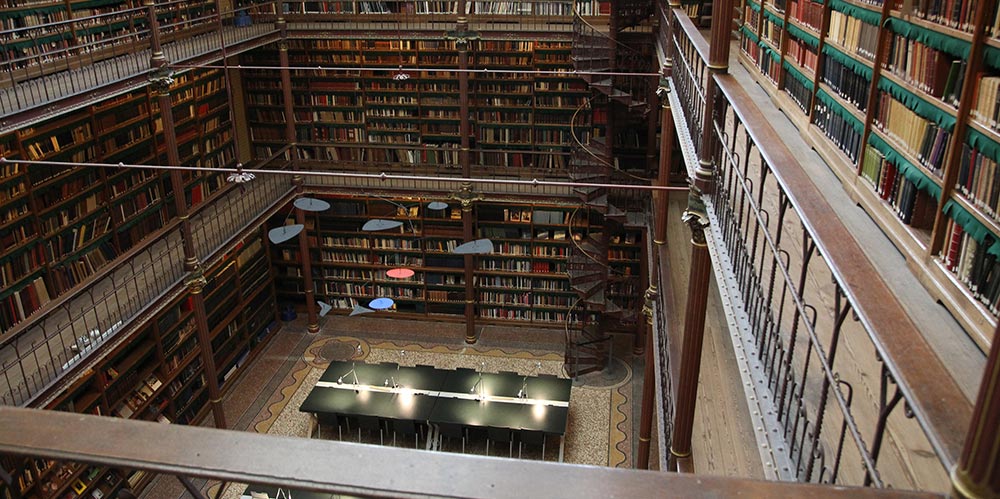
The Cuypers Library is the largest and oldest art historical library in the Netherlands. Visitors, students and art historians alike are welcome to use the library to delve deeper into the Reich's Museum Collection. iPads are available for general use, and there's free Wi-Fi access, both in the library and throughout the museum. Their website is loaded with helpful information about the collection, including some audio guides that you can download that will help walk you through the museum or just listen to the information from the comfort of home.
The museum took an unusual step of making high resolution images of its collection available for free download via its Rijksstudio website. Already they've got over 100,000 items available for download, and eventually the entire collection of one million works will be online. You can do anything you like with the images -- there is no limitation. The museum has placed them in the public domain, and yet most visitors like to take their own photographs to capture that personal experience of being there. Taking pictures and video inside the museum is allowed, but no flash, no tripods or selfie sticks, please.
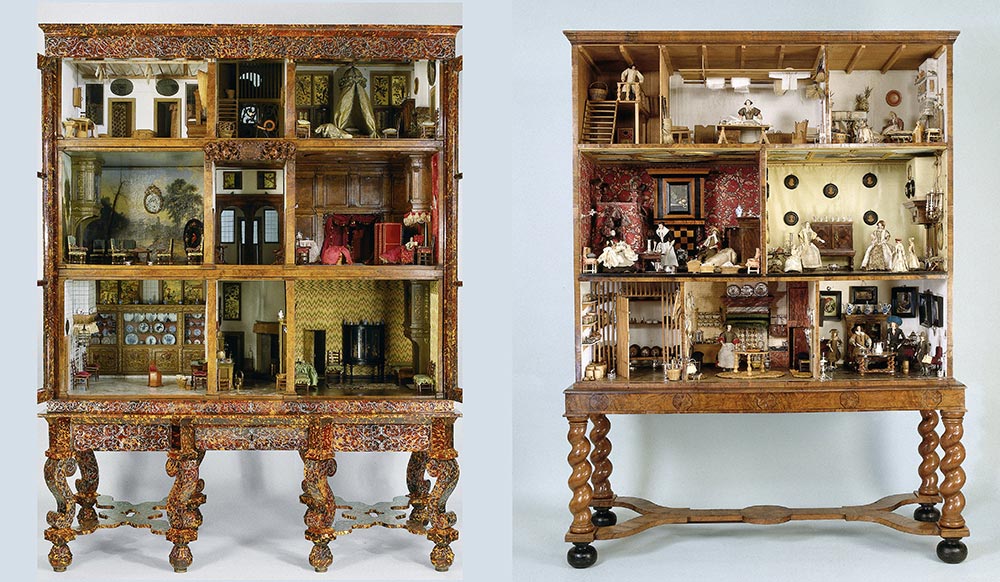
The museum has three miniature doll's houses made in the 17th century that provide a detailed view of how affluent houses were once furnished. In those days, dollhouses were not toys. They were a hobby. The equivalent for women of the collection cabinets kept by men. What makes these dollhouses so unusual is that all the pieces were precisely made to scale in the same way and using the same materials as their regular counterparts.

The second dollhouse contains readymade furniture, including a large amount of miniature silver. There's miniature porcelain from China, and skilled craftsmen were commissioned cabinet makers glass blowers, silversmiths, basket weavers and artists to furnish the doll houses an extremely expensive hobby. Each little house cost as much as an actual house on the canal.
Special collections comprise more unusual objects from the rich holdings of the Rijksmuseum, for example, musical instruments, magic lantern slides, glassware, porcelain, Italian Renaissance, painting and sculpture, an impressive armory with guns, cannons and armor and a large number of ship models.
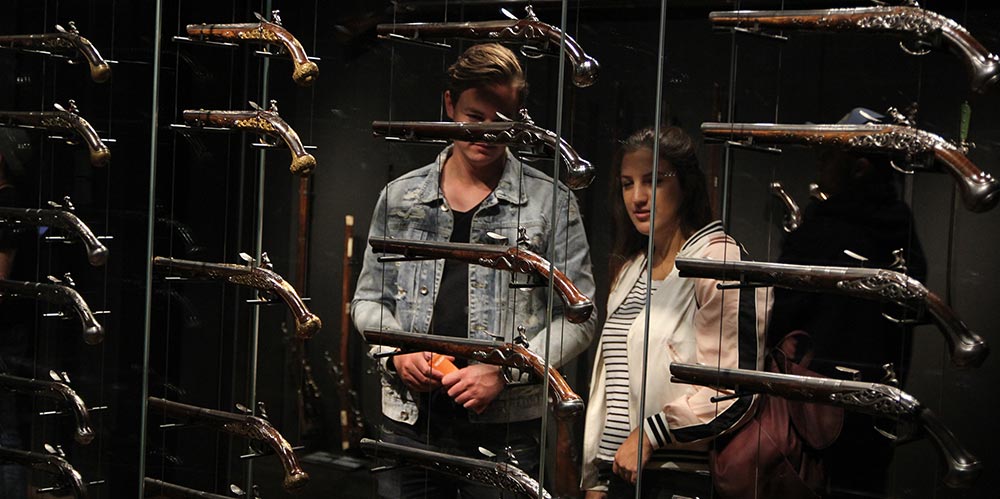
Those weapons are a reminder of the military force the Dutch used in their economic conquests in Southeast Asia and the Americas. Back in the days of colonialism in the 17th century, often called the Golden Age, the 17th century was a time of great prosperity for the Netherlands, even though there was also endemic warfare between them and Spain, called the Dutch War of Independence or the 80 Years War, which continued from 1568 through 1648.
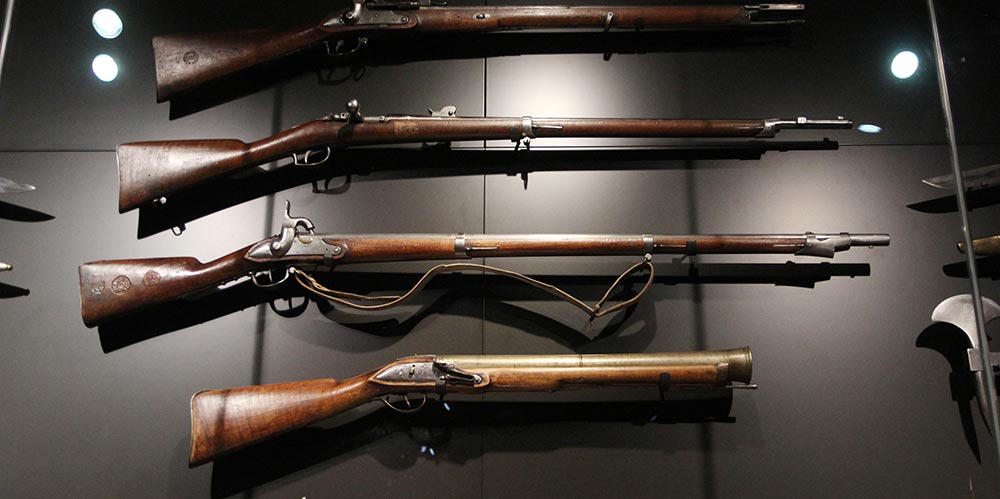
It was the most violent and chaotic period in Dutch history. Churches were plundered, cities besieged, people slaughtered, and battles fought everywhere. Ultimately, the country was torn apart, with Belgium created as an independent country to the south. But it was also a period of economic trade with Indonesia, the Spice Islands, South America and great prosperity at home with the flourishing of the arts and development of a strong merchant class.
Even though the 17th century is typically called the Dutch Golden Age, there has been a bit of a politically correct backlash to that term lately, where certain museums, such as the Amsterdam Museum on the other side of the city, are no longer calling it a Golden Age, which ignores the many negative sides of the 17th century, such as poverty, war, brutal attacks with superior weapons, forced labor and human trafficking.
.jpg)
Some critics maintain erasing that term is complete nonsense, as you can't erase the past. It was a time of expansion and progress that also had its negative sides. The Rijksmuseum is continuing to use the term Golden Age, as its director explained, "that does not alter the fact that we also acknowledge the dark side."
A model shows the Dutch trading post on the small island of Dejima in Japan. You might recall that Japan closed itself off to the outside world from the 17th through the mid 19th centuries. But the Netherlands was the only European country that maintained an active trading agreement.

It was a mutually beneficial arrangement between Japan and the Netherlands because the Japanese were able to acquire knowledge of Western science and technology and Dutch made handsome profits. While acquiring cannons and other weapons, the Dutch were able to establish a monopoly in trading various Japanese goods to the Western world, especially ceramics, which led on to the creation of the Dutch Delft pottery industry.

One of the fun interactive exhibits is the display of Magic Lantern slides. Magic Lanterns are the forerunners of modern video and film projectors. Back in the mid 17th century it was discovered that a small picture painted on glass could be projected on a larger scale, using a light source and a series of lenses. These images were projected on screens or walls and inspired such wonder in viewers that the invention became known as the Lantern Magic or Magic Lantern. At first, the Magic Lantern was considered a novelty that was mostly acquired by scholars and the wealthy.
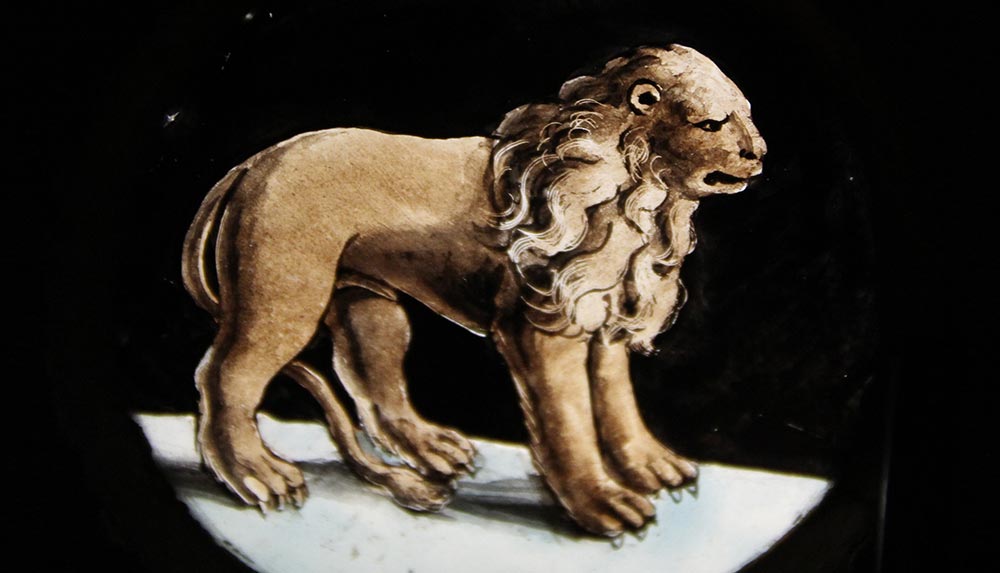
In the early 18th century, itinerant lantern operators began to travel the land, giving magic lantern shows. Gradually, the Magic Lantern became a source of entertainment for a wide public. The subject matter was quite wide-ranging, including biblical stories, classical tales, portraits of historical figures, caricatures exotic animals. It was for education as well as entertainment, and some of the scenes verge on the erotic, or perhaps they were medical in nature showing a lot of flesh and other kinds of ribald scenes.
The telescope and microscope were both invented in Holland in the early 1600s. The Magic Lantern can be seen as a further development of this same optical technology. Prominent Dutch scientist Christiaan Huygens is widely accepted as the inventor of the Magic Lantern. Although the popularity of Magic Lanterns decreased after the introduction of movies in the 1890s, they remained a common medium until slide projectors came into widespread use during the 1950s.
You can see there is a lot more to the Rijksmuseum than just Rembrandt, Van Gogh and Vermeer.
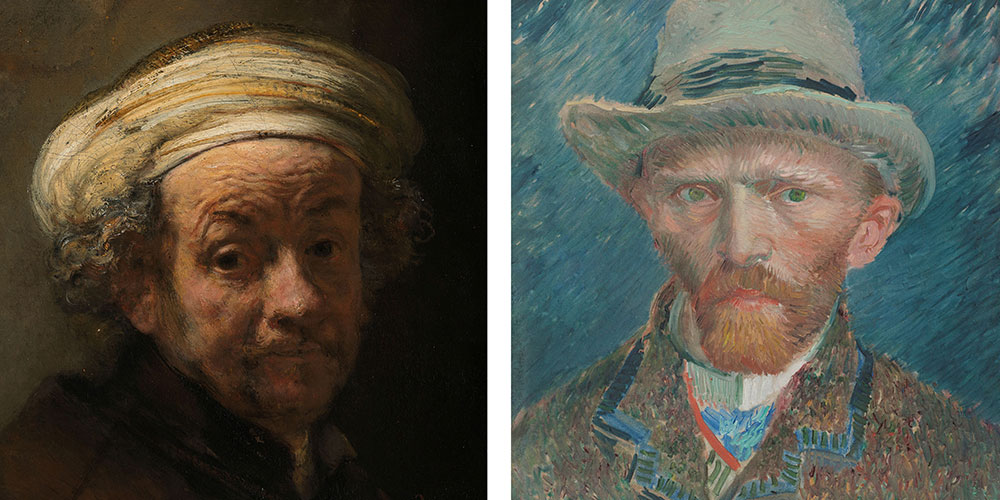
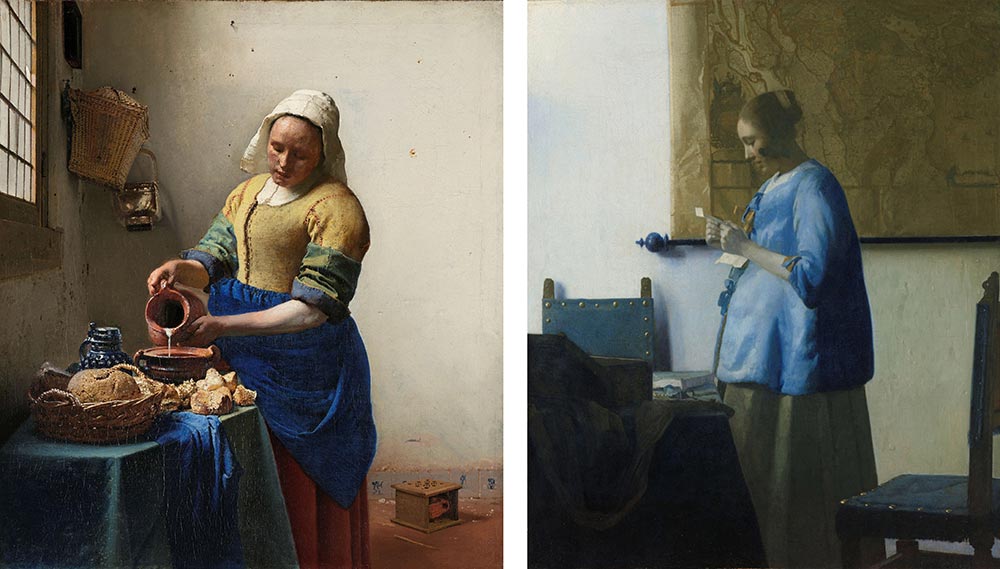
But for now we are going back to Rembrandt and some of those other early Dutch painters, taking a close look at The Night Watch, Rembrandt's most famous painting and also his largest at 11 feet by 14 feet.
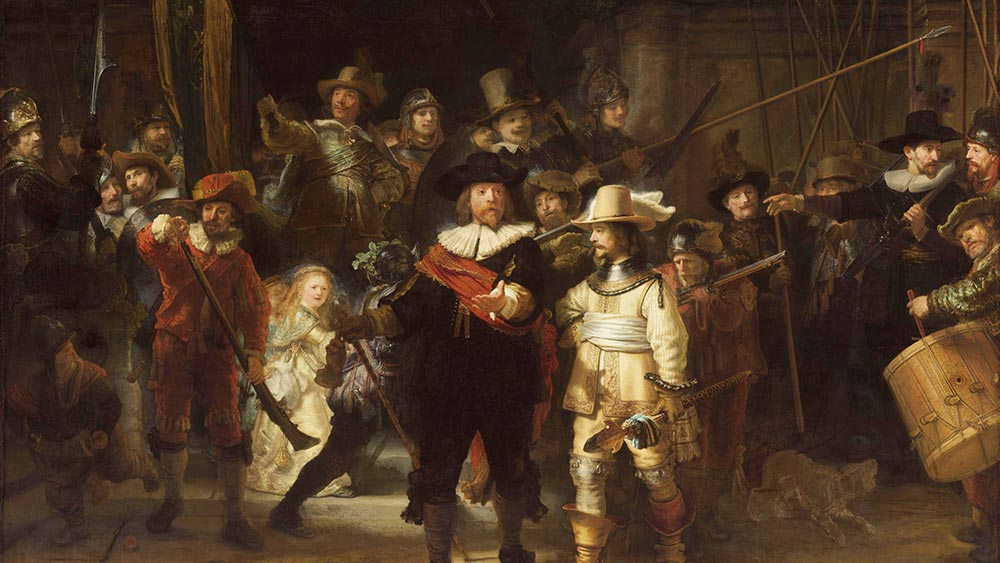
Created in 1642 for one of the meeting halls of Amsterdam's Civic Guard, a militia company that protected the city, the captain and his lieutenant are in the front and followed by their soldiers streaming out of the guardhouse into the light. But surprise, it is not really nighttime. The men are leaving in broad daylight. The remarkable chiaroscuro effect of highlight and shadow and darkening of the canvas over time led to the mistaken title.
The event represented really did take place in daylight. Each one of the guild member represented paid 100 Florins to Rembrandt to ben included, so that as there were originally 16 in the group, the painter received 1600 Florins for his work. Other celebrated paintings here are his self-portrait as a youth, and as an older man with characteristic highlights, and shadows forming the shape and the portrayal of the Jewish Bride.
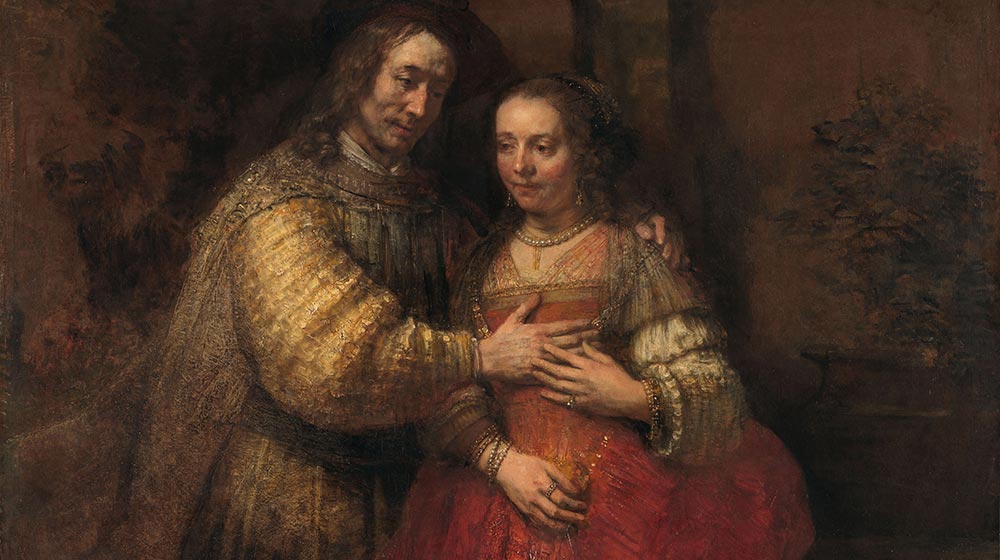
It figures this museum has the world's largest Rembrandt collection with 22 paintings and over 1000 prints and drawings. After all, he lived and worked in Amsterdam for most of his life. These paintings alone would make a trip to Amsterdam worthwhile too experience thisemiracle of genius. The Syndicate is also a famous Rembrandt portrait group, the epitome of Dutch masters, five cloth merchants, all dressed alike in black with white colors and large black hats, seated around a table covered with a red cloth verifying their accounts. Some critics consider it Rembrandt's greatest picture.
Two other large and famous group portraits of this style are in the gallery by Bartholomeus van der Helst. One represents Captain Rule of Bikers Company of Civic Guards also intended to hang on the wall of their Guild Hall headquarters, quite similar to the Night Watch, but brighter in overall color pattern.

It contains 32 life-sized figures in a substantial canvas that Is seven and a half meters wide that almost fills an entire wall. Every figure is dramatic in pose and expression, and the colors of the costumes are brilliant and varied. The other large work by der Helst depicts a banquet of the St George Company of crossbow men in their guardhouse.
The dramatic occasion was the signing of the Treaty of Munster which marked an end to the long war with Spain. In the middle of the captains of the Civic Guard company shake hands as a sign of peace and the drinking horn is passed around. The 25 figures are splendidly dressed in velvet and satin doublets, plumed hats, lace collars and cuffs sashes, high boots and golden spurs painted in 1648. It depicts the joy of Amsterdam's armed militia, whose weapons can now be laid to rest.
.jpg)
History of the museum
In 1798 the Government decreed the formation of a national museum which was first installed in The Hague in 1800. But in 1808, King Louis Bonaparte, the brother of Napoleon, moved his residence to Amsterdam and ordered a royal museum to be created there, something similar to what had recently happened in Paris with the opening of the Louvre Museum. This new museum was opened in Amsterdam's Royal Palace on the Dam Square in 1809 with about 200 paintings, including already The Night Watch and other Rembrandts. Over time, the collection grew to include many more pictures, drawings, prints, sculpture, carvings, jewelry, antiquities and curiosities of all kinds.
Work on the present building commenced in 1876 with a design that combines the Gothic and Renaissance styles. This museum building was opened officially in 1885 with an expanded collection including departments of Dutch History, sculpture and applied art. Over time, the collections increased, while museum practices and philosophies continued to evolve, and the building underwent changes with addition of many more rooms.
.jpg)
The monumental building experienced more than 125 years of intensive use. But by the 1990s the structure gradually started to fall short of modern requirements for museums and needed to be renovated with a thorough overhaul. The museum was officially closed to the public for 12 years of reconstruction and renovation, starting from the year 2000 until the Rijksmuseum once again opened its doors in 2013.
Both the building and the presentation of the collection underwent a total transformation. They added modern spaces and facilities to the neo-Gothic building and turned the 19th century structure into a light and open museum for the 21st century.
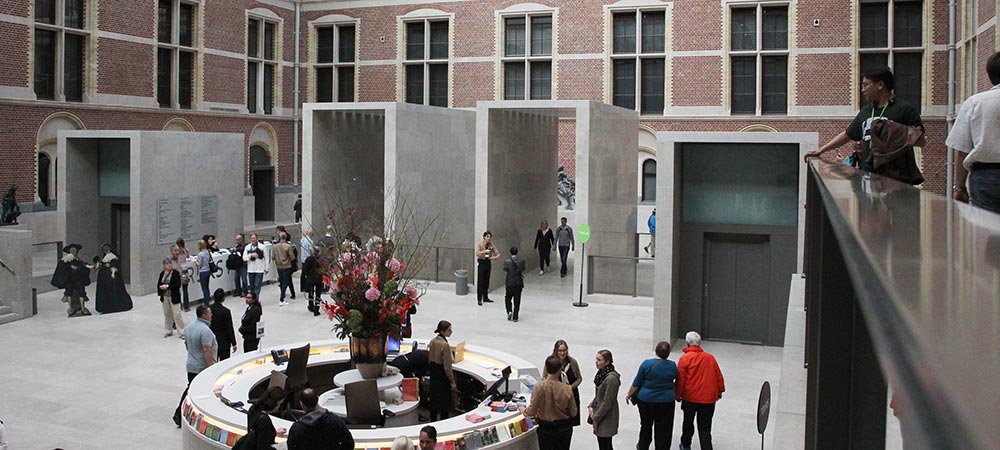
An impressive new entrance lobby called the Atrium, was created in the renovations, interspersed with windows and niches. It features a large glass roof and polished stone floors that reflect the natural light, making the entryway feel airy and bright, surrounding this courtyard with brick walls that had been exterior facades.
It is possible to see a lot of the museum collection in half a day. Visitors don't usually have more than three or 4 hours to devote to a single museum, even one so large and wonderful as this. It's not usually a good idea to spend the entire day inside one museum. It's just too much, even for the diehard art connoisseurs. Instead, you'll find many other wonderful places in Amsterdam to spend some time for the rest of the day. If you find you need more time for careful examination or to see more, hopefully you're in Amsterdam for enough days that you can come back for a second visit.
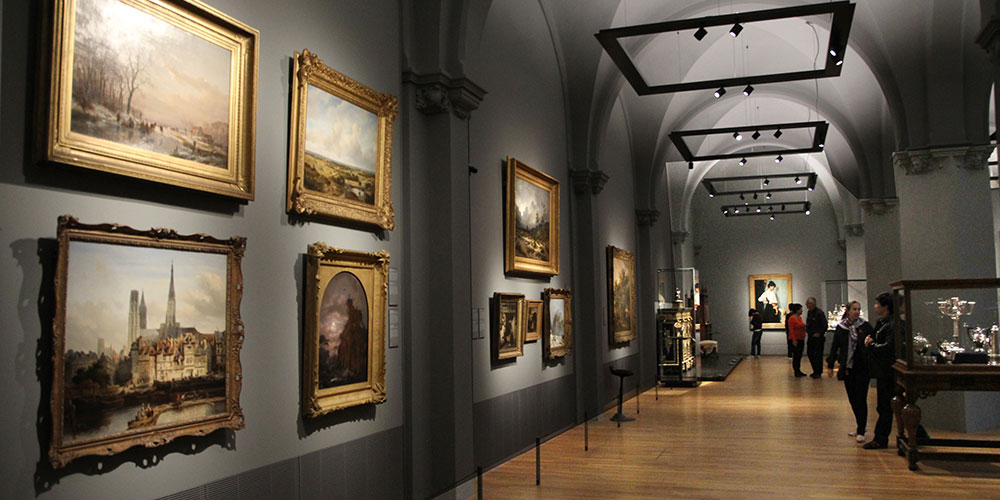
------------